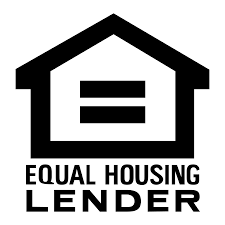Is 20 Year Mortgage Better Than 30?
When applying for a mortgage, most opt for a 20 or 30-year. These are more common due to the lower payments, better interest rates, and the fact that most home buyers do not have the cash flow to take on a 15-year mortgage. Choosing between the two may be complicated, so listed below are the pros and cons.
The Advantages of a 30-Year Mortgage
As the name suggests, this provides three decades to pay back the loan. Assuming a fixed rate was selected, the home loan maintains a steady interest rate.
- Consistent Monthly Payments: 30-year mortgages sustain the same monthly payment. This makes budgeting more manageable.
- Lower Mortgage Rates: Even though you may pay more interest across the life of the loan, the payments will be lower than a 20-year loan.
- Flexibility: A 30-year allows you to make extra payments, but it is unnecessary. This affords some cushion for a less stable budget. If you need wiggle room, a 30-year mortgage loan is ideal.
- Locked Low Rates: A significant benefit is locking in the interest rate. If you can secure a low rate, you can get low payments no matter what transpires in the housing market.
How Do I Qualify for a 30-Year Mortgage?
Lenders will examine several factors. First, they will consider your credit score. For a 15 or 20-year mortgage, one needs an excellent score to qualify. However, for a 30-year, your score can often be as low as 600. Mortgage lenders will also consider your debt-to-income ratio (DTI).
The Disadvantages of a 30-Year Mortgage
- More Interest: Despite lower payments across the term, you will pay more interest. This means less savings on loans.
- Paying Off Your Home Slower: This term may be more problematic because being a homeowner will take longer.
- Higher Interest Rate: The longer the mortgage term, the more risk is taken on by the lender.
- Slower Equity Buildup: On average, the first ten years of payments will pay off the interest. This means far less equity than other loans.
The Advantages of a 20-Year Mortgage
Though it may not be as popular, borrowers get better interest rates than a 30-year and better monthly payments than a 15-year.
Here are the pros:
- Pay Off the Home Faster: Some opt for a 20-year because they want to be homeowners faster and can afford the payments.
- Faster Equity Accumulation: Higher payments mean you build equity faster. Equity is the difference between your loan and how much your house is worth. Equity can be used for refinancing and home equity loans.
- Lower interest: Despite a higher payment, you have lower interest rates as the mortgage company takes on less risk.
- Consistent Payments: Similar to its 30-year counterpart, the 20-year fixed-rate mortgage offers consistent monthly payments.
How to Qualify for a 20-year Mortgage?
A 20-year mortgage requires better scores. For example, while you might qualify for a 30-year with a credit score of 650, a 20-year often requires a minimum of 740. You also need a better DTI ratio.
To increase your credit score, pay off credit cards, pay bills on time, and contact your bank for a credit increase.
The Disadvantages of a 20-Year Mortgage
- Higher Monthly Payments: Indeed, interest is lower; however, you pay 33% more per year than a 30-year home loan.
- Middle of the Road: A 20-year mortgage is the most balanced. It does not provide the super low interest of a 15-year or the low payments of a 30-year. Depending on the circumstances, this may be a con.
Which is Appropriate for Me?
If you can afford it, a 20-year mortgage is better. Despite costing more, over the life of the loan, you save on interest. If you need lower payments and higher flexibility, a 30-year may be preferable.
What to Consider Before Applying for a Mortgage
Below are two factors to consider:
Age: If you are between 20-30, it may be worthwhile to get a 30-year mortgage. You will be paying it off for a long time and since you work, lower payments may be beneficial. If you are in your 40s or over, perhaps you should opt for a 20 or even 15-year mortgage.
Monthly Payments: No matter the lender or loan term, a significant portion of one’s income goes to homeownership. In most cases, the payment should not be more than 28% of your income. If a 20-year mortgage means you would pay more, opt for a 30-year mortgage.
The Mortgage Application Process
Included below is an outline. For more information about applying for a mortgage, check out this in-depth article.
- Pre-approval: Acquire a pre-approval letter from a lender. Sellers will often request you procure this document.
- Make an Offer: After the pre-approval, you can visit properties and make offers.
- Choose a Lender: After making an offer, you can either keep the creditor that pre-approved you or not. Either way, this is when you make that decision.
- Complete the Application: Most of this will have been completed during the pre-approval; however, a few more documents and signatures are required.
- (Optional) Request a Home Inspection: It is recommended to demand a home inspection to examine things like the structure, foundation, and roofing.
- Have the Property Appraised: This step, often arranged by the lender, ensures you pay a fair price.
- Closing Day: Time for your big day! Sign all closing documents, and the home will be yours.





